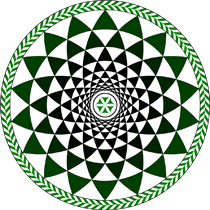Speaker
Dr
Ewa Juszyńska-Gałązka
(Institute of Nuclear Physics PAN, Kraków)
Description
3,3-dimethylbutan-2-ol, 2,3-dimethylbutan-2-ol, are two of seventeen isomers of hexanol of the same chemical formula C6H13OH differing in physical properties. These are interesting representatives of a class of soft matter functional materials being isomeric varieties. The structure of hexanol globular molecule, strongly influencing their intermolecular interactions, facilitates the occurrence of the glassy state in these materials. 33DM2B easily undergoes vitrification, while 23DM2B never becomes glassy. The plastic crystal phase has properties of both the solid phase – translational order of molecules – and the liquid phase – orientational disorder of molecules and the high-valued amplitude of atomic vibrations and stochastic dynamics that can be detected by neutron scattering and absorption spectroscopic measurements.
The mean square displacement of the hydrogen nuclei from the equilibrium positions for (highly) ordered crystal phase is about 0.2 Å2 (even very close to the crystal melting point). This can be compared with the corresponding mean-square displacement in plastic crystal phases, amounting to slightly less than 1 Å2 (for temperatures close to plastic crystal solid-solid phase transitions and to the melting point of plastic crystal). The neutron scattering “elastic window scan” measurements allow us to determine the temperature of vitrification of plastic crystal phase at about 200 K and the temperature of freezing of the rotational degrees of freedom at about 120 K.
Stochastic molecular dynamics of two alcohols was studied by Quasielastic Neutron Scattering. The overriding goal here is to understand better the processes that allow the formation of glassy state in these alcohols or lack thereof (apart from a more-or-less globular molecular shape). The experiment was performed on the SPHERES backscattering instrument, for temperature range from 4 K to 300 K and momentum transfer range 0.2 Å−1− 1.8 Å−1, with the temperature varying in both directions. Neutron scattering proved the only experimental technique capable of detecting the softening of the 33DM2B glass-of-rotational state. The narrow component of the QENS spectra is almost 2 µeV, while the broader systematically changes with temperature and appropriate phase. The CH3 reorientation was observed even at 60 K. The activation energy for this motion was estimated to be 9 kJ∙mol−1.
Author
Dr
Ewa Juszyńska-Gałązka
(Institute of Nuclear Physics PAN, Kraków)
Co-authors
Prof.
Maria Massalska-Arodź
(Institute of Nuclear Physics PAN, Kraków)
Dr
Michaela Zamponi
(JCNS & ICS, Forschungszentrum Jülich, Germany)
Dr
Mirosław Gałązka
(Institute of Nuclear Physics PAN, Kraków)
Prof.
Wojciech Zając
(Institute of Nuclear Physics PAN, Kraków)

